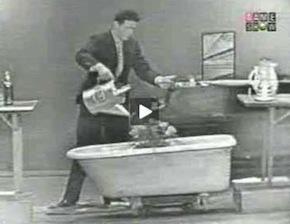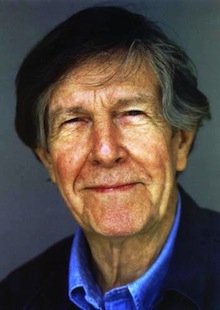
“There’s a beautiful West Coast nexus of music,” said Adam Sliwinski of So Percussion, talking about that quartet’s Oct. 26 Stanford Lively Arts show, titled “We Are All Going in Different Directions: A John Cage Celebration.” He continued, saying: “Henry Cowell influenced John Cage; so did Pete Seeger’s father, Charles [both Bay Area composers and teachers] ... and, in the most fascinating collision, [serialist composer] Arnold Schoenberg, of all people, happened to be right there too [in Los Angeles]. And there were all these gamelan orchestras showing up. We’re a percussion group — and percussion music would’ve existed in a completely different way without Cage’s crazy ideas.”
Sliwinski was musing, making connections between sonic adventurer Cage (whom Schoenberg famously dubbed an inventor of genius, not a composer) and the “innovative creative thought bubbling around” the Bay Area in the arts and, just south of thye Stanford campus, in high tech.
“It occurred to me when we first booked the gig,” noted Sliwinski, “that something exists in American thinking, a kind of three-dimensionality, not getting bogged down in the way it used to be. ... And I’m thinking now that a show near Silicon Valley, powered almost exclusively by Apple tech[nology] just a few weeks after Steve Jobs died — that other guy who influenced this kind of performance! — has resonance.”
So Percussion, consisting of Sliwinski, Eric Beach, Josh Quillen, and Jason Treuting, will perform pieces by Cage dating from 1939’s Imaginary Landscape #1 to Inlet of 1977, the latter being part of a “spontaneous performance” of four Cage works. The quartet will also play its own piece, composed with the electronica duo Matmos, called Needles; Cenk Ergun’s Use; Dan Deacon’s “Bottles” from The Origin of the Riddler; and the quartet’s own 24 X 24, with special guests.
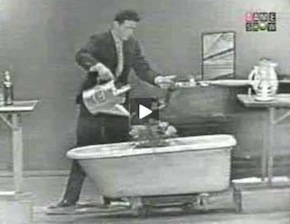
(Two evenings before So Percussion’s performance, as part of Stanford Lively Arts’ minifestival of Cage and choreographer Merce Cunningham, Cage’s collaborator and life partner, pianist Gloria Cheng will be featured in a free concert of Cage piano works from the ’40s and ’50s, one of them including a pitcher of water, a duck whistle, a deck of cards, and the score projected above. Other works played with prepared piano — one of Cage's inventions — inspired by the composer's study of Indian music and philosophy will be played at Stanford’s Center for Computer Research in Music and Acoustics, part of the CCRMA Cabaret program, 8 p.m., Oct. 24.)
Of So’s collaborators for the performance, one of them being violist Beth Myers, Sliwinski noted: “One’s a longtime friend — Cenk Ergun, now a Ph.D. student at Princeton, a composer and electronics artist who’s been through the academic system. ... [Composer] Dan Deacon and M.C. Schmidt of Matmos are outside of the contemporary classical music scene, but very aware of Cage and his legacy. Matmos is relentlessly experimental. Their rhythms and melodies, with a sound out of techno-house, seem to respond to the spirit of Cagean music. It’s danceable, ecstatic. They’ve worked with Björk. Like Cage, they took amplified cactus, and layered out loops, amplified soda bottles with a contact mic.”
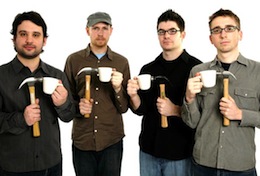
Cage’s original — and very controversial — use of synchronized turntables and randomly chosen broadcasts on multiple analogue table radios will meet a newer technology: Mac laptops. The evening at Stanford promises a stage full of instruments, devices and just plain objects.
Asked about their relation (and Cage’s own) to the audience, and of his music’s initial controversy, Sliwinski replied: “We’re approachable as a group, and have a benign relation with the audience. We enjoy it when they enjoy themselves. And we don’t claim to speak for Cage. We filter his music through our own worldview. We constructed this evening as a collage ... laying it out, letting it be a dialogue, as if saying, ‘This is what it made us think of’ ... not trying to project how it felt at the time. We’re curious to see what other people think. We’re not confrontational artists. At one time, his music was a statement; people felt confronted. They don’t have to, anymore. Some radical elements aren’t so radical anymore. It’s more thought-provoking now.”
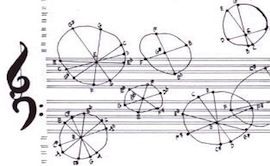
On Cage’s oeuvre, he noted: “It’s a very complicated body of work, one hard to make a definitive statement about. It was crazy at that moment, radically experimental in its very nature, to do tin cans carrying the melody as in one of his earlier pieces. The rhythms, motives, are actually quite familiar, entertaining. There’re exciting barn-burners, and a loud boogie-woogie interval in Credo. We think he was a really good musician; his early pieces make a show of that. Later pieces made it a little harder for those not steeped in his music.”
Of the shape of the evening, Sliwinski concluded: “The show’s exactly 91 minutes, with no intermission. We’re taking Cage’s cue, using the element of time as duration to structure the concert. Anyone curious, even remotely interested, we invite to give us 91 minutes of their life!”

